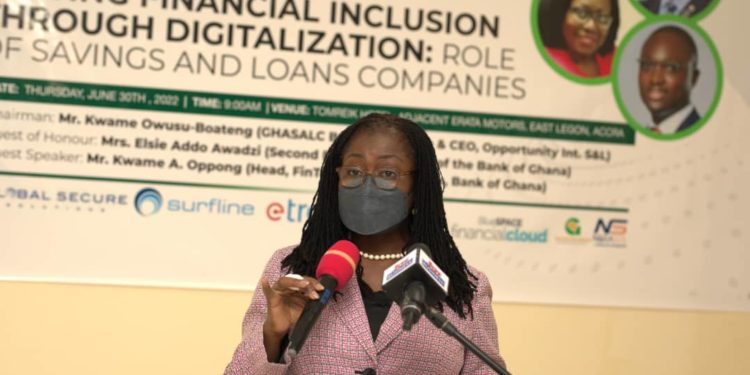Savings and Loans companies risk becoming “extinct” – Elsie Addo Awadzi
“Financial institutions that have not already designed, adopted, and implemented a digital transformation strategy are already behind the curve. The S&L sector risks becoming a dinosaur as more banks reach the informal sector and MSME sector with their innovative digital financial services,”
- Advertisement -
Second Deputy Governor of the Bank of Ghana (BoG), Elsie Addo Awadzi, has said savings and loans companies risk becoming “a dinasour” (extinct) as more banks reach the informal sector and MSMEs with their innovative digital financial services.
According to the 2nd Deputy Governor, this is because the informal sector and MSMEs are traditionally served by savings and loans companies.
- Advertisement -
The Deputy Governor therefore noted that there is the urgent need for savings and loans companies to take steps to reposition themselves by leveraging emerging technologies to modernise their business models to meet the fast-changing needs of their customers and remain relevant to the informal sector.
- Advertisement -
“Financial institutions that have not already designed, adopted, and implemented a digital transformation strategy are already behind the curve. The S&L sector risks becoming a dinosaur as more banks reach the informal sector and MSME sector with their innovative digital financial services,” said Mrs Elsie Addo Awadzi speaking at the 12th Annual General Meeting of Ghana Association of Savings and Loans Companies (GHASALC).
Urging savings and loans companies to leverage emerging technologies to offer digital financial services, the Deputy Governor however, warned that digitisation comes along with its own complexities and risks, including cyber security risks, third and fourth party/outsourcing risk, data privacy breaches, technology failure risk, increased AML/CFT risks, and consumer protection risk among others.
Adding that, savings and loans will therefore need to augment their capital base in order to digitise and deploy more sophisticated systems to help mitigate attendant risks.
Over the last five years, BoG has augmented the risk management framework for banks and SDIs in tandem with increased digitization. These include the Cyber and Information Security Directive issued in 2018 which is currently under review, enhanced anti-money laundering and countering of financing (AML/CFT) rules, and consumer protection rules.
“We will continue to monitor the rapid evolution of risks in the digital financial services ecosystem and recalibrate our rules and supervisory approaches and tools to help mitigate them, while ensuring that regulated institutions effectively manage the risks that their businesses and actions or inactions pose to the entire system,” she stated.
- Advertisement -
Meanwhile, the Second Deputy Governor at the AGM, launched the Association’s Code of Ethics and Conduct for the Association.
The Association’s Code of Ethics and Conduct are aimed at ensuring the continued commitment to adhering to best practices and ethical standards that would engender public trust and confidence in the activities of the savings and loans sub-sector.
“The Bank of Ghana endorses the Code, following our extensive review of earlier drafts, and commit to continuing to support the development of a vibrant and modern S&L sector based on values and cultures that promote trust and confidence and help to strengthen the stability of the financial system.
“In conclusion, the potential of the S&L sector to advance and promote financial inclusion through digitalisation has been clearly demonstrated on the continent. The Bank of Ghana has adopted a forward-looking approach to regulation and we encourage the sector to follow suit in pursuit of the advancement and development of our economy as a whole,” she remarked.
At the end of the first quarter of 2022, total assets of the specialised deposit-taking institutions sector exceeded GHS 16.0 billion, of which the Savings and Loans sub-sector contributed 35.1%.
Savings and Loans companies disbursed a total of GHS 3.4 billion in net loans to private enterprises and businesses in the first quarter of 2022 alone.
- Advertisement -


